
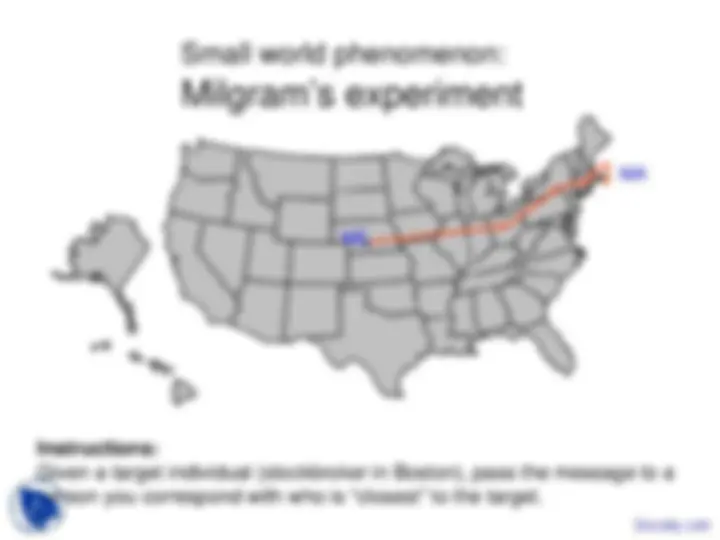
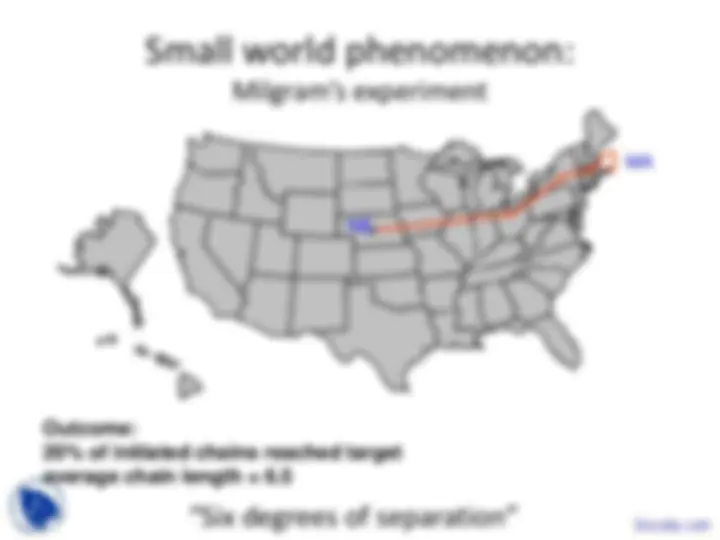
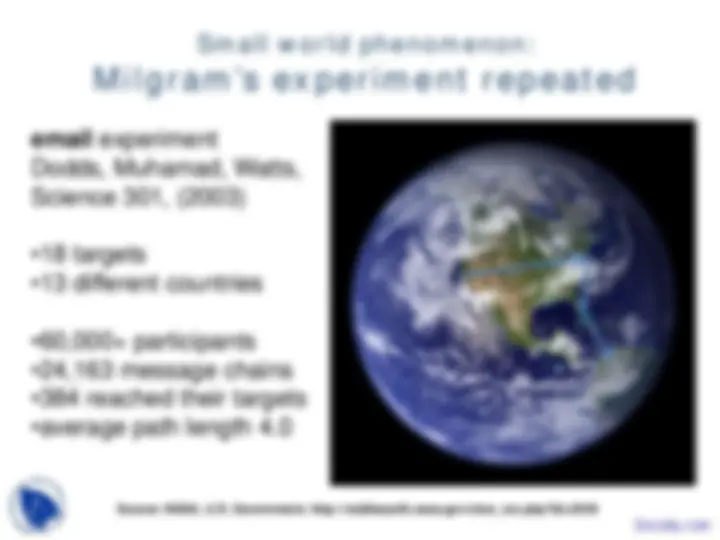

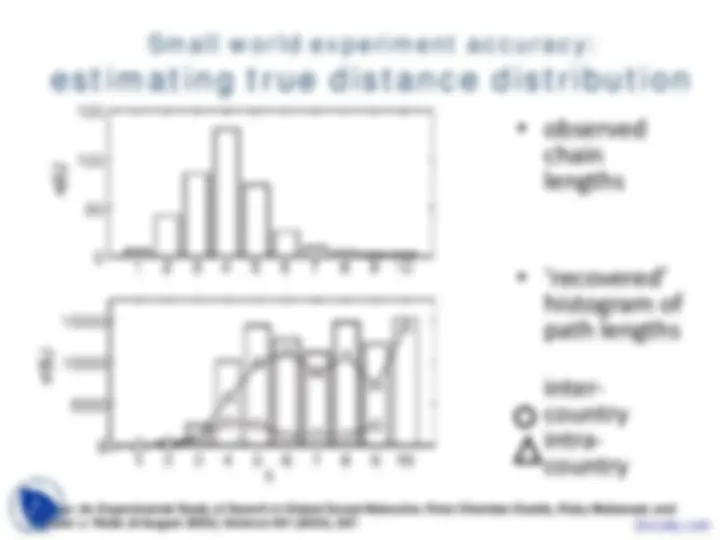
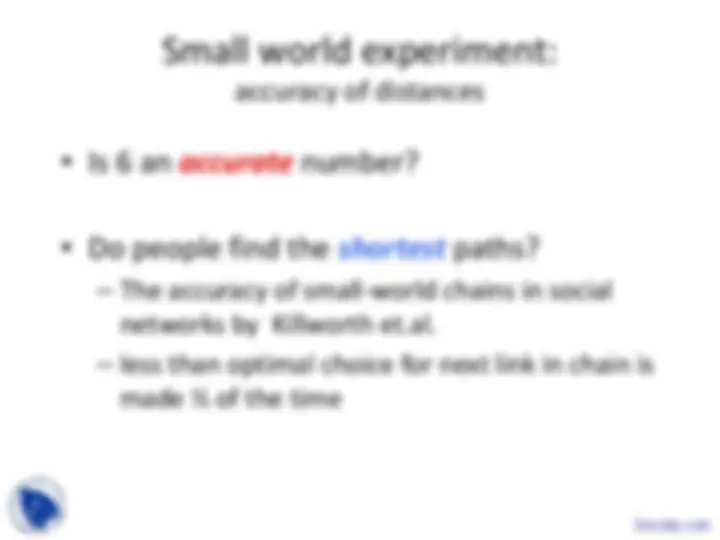
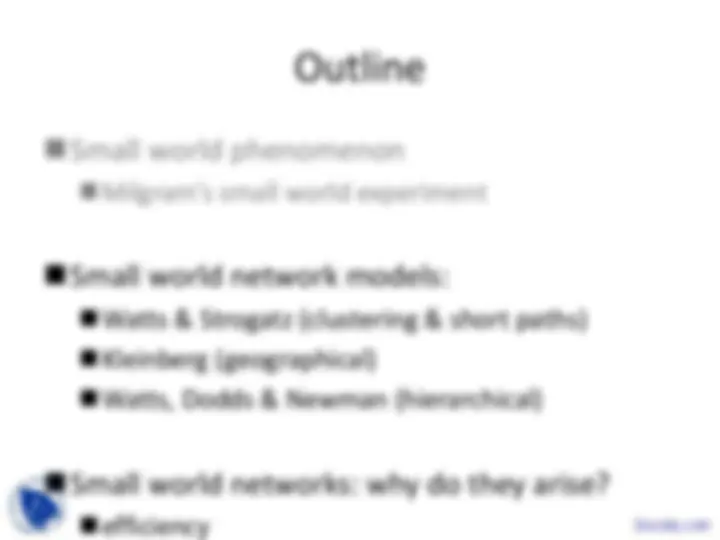
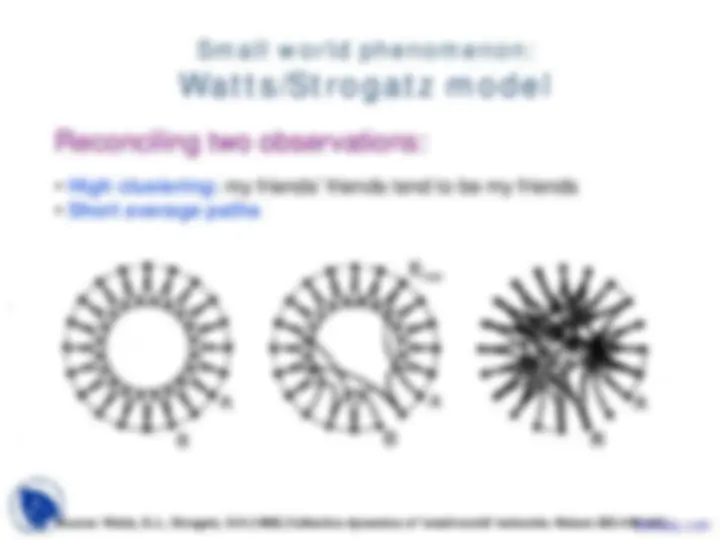
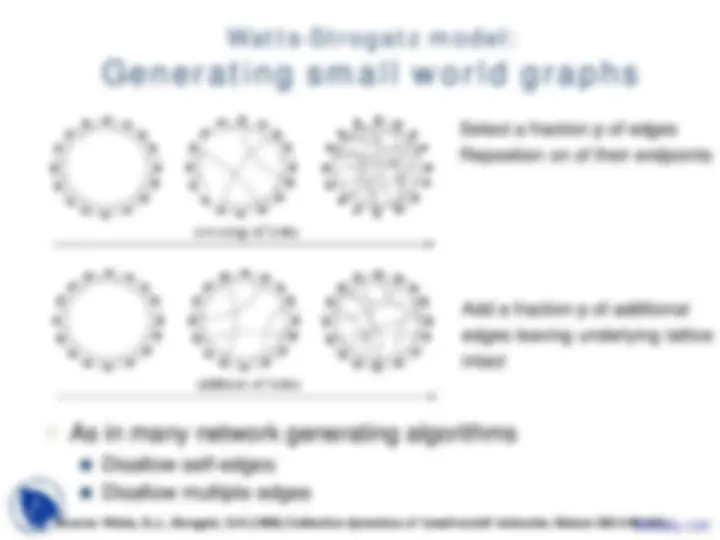
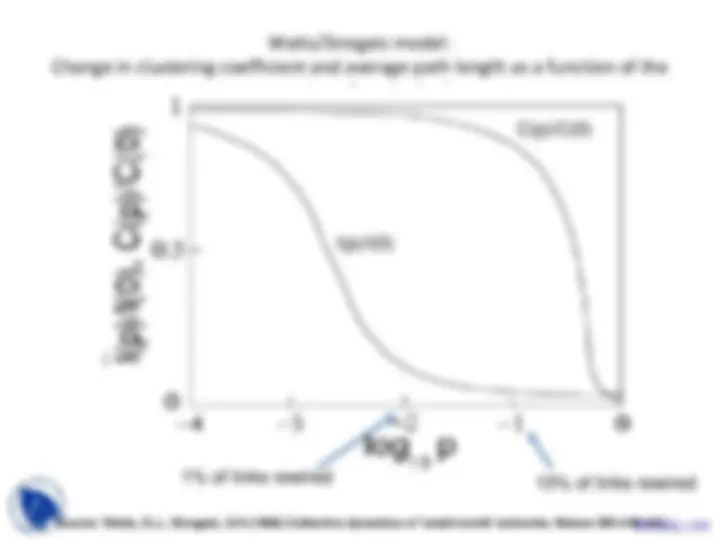
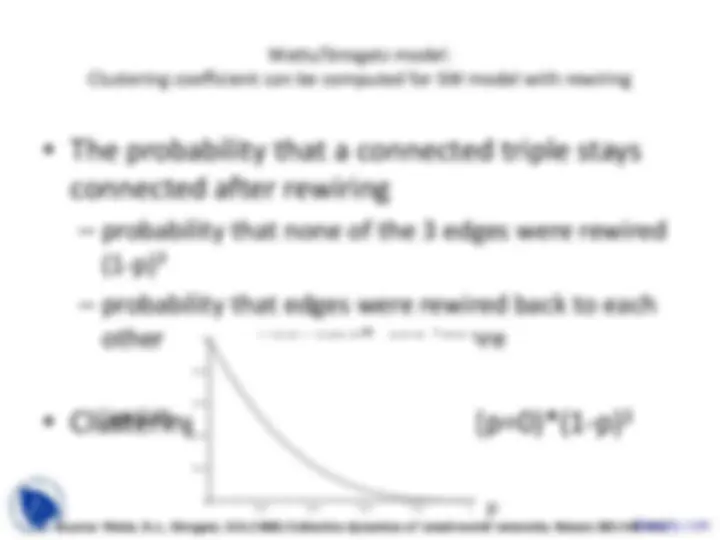
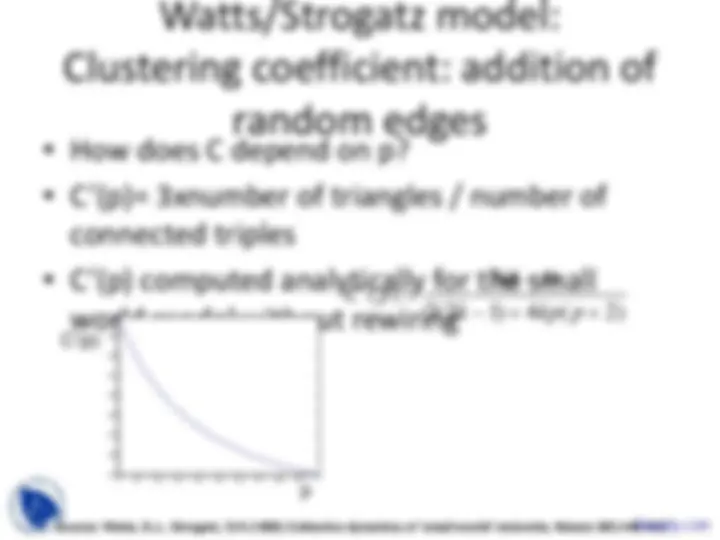
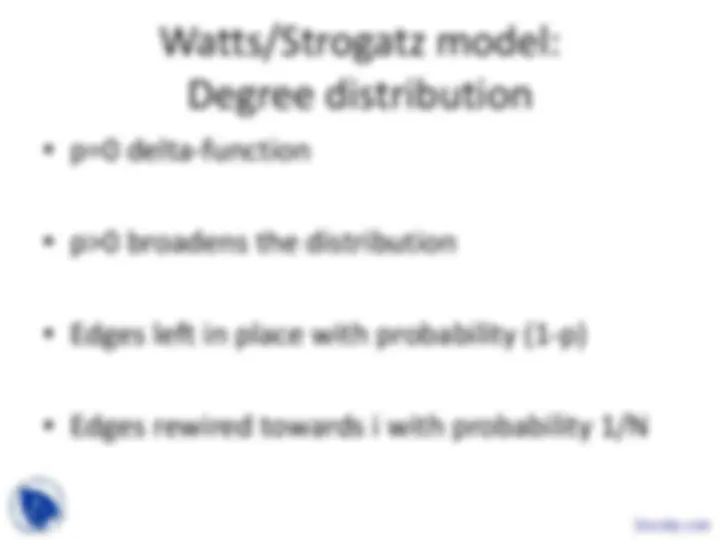
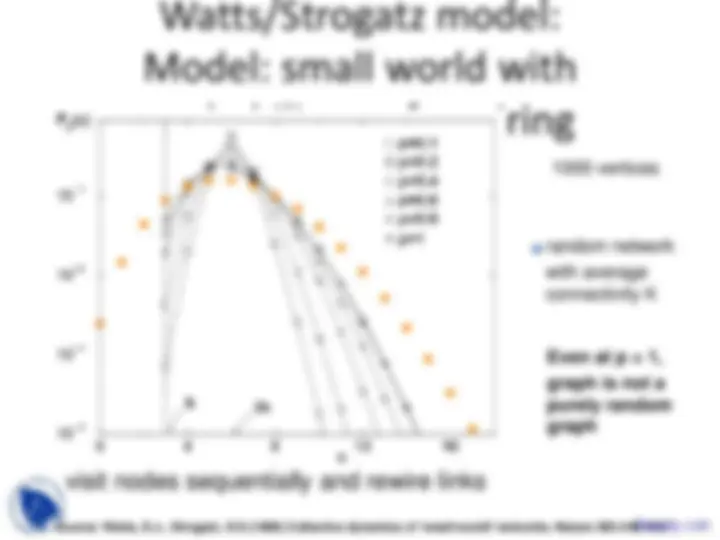
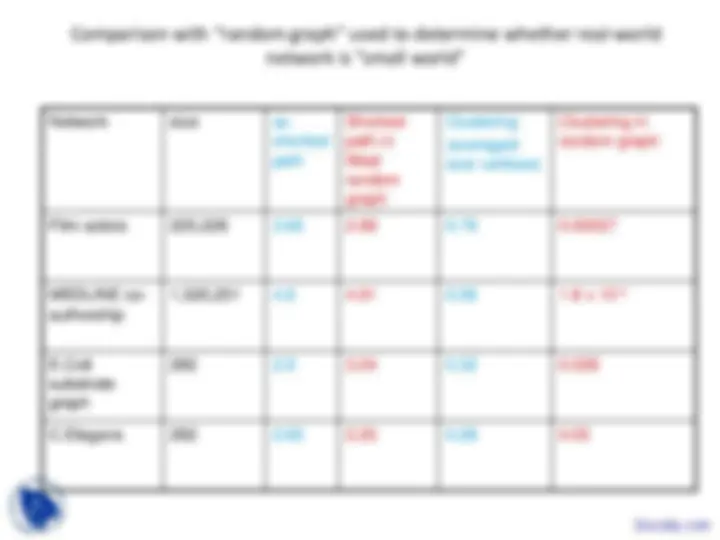
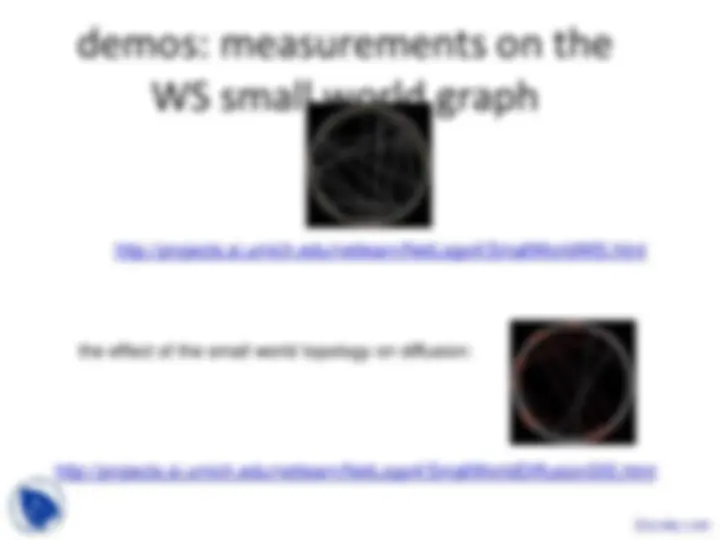

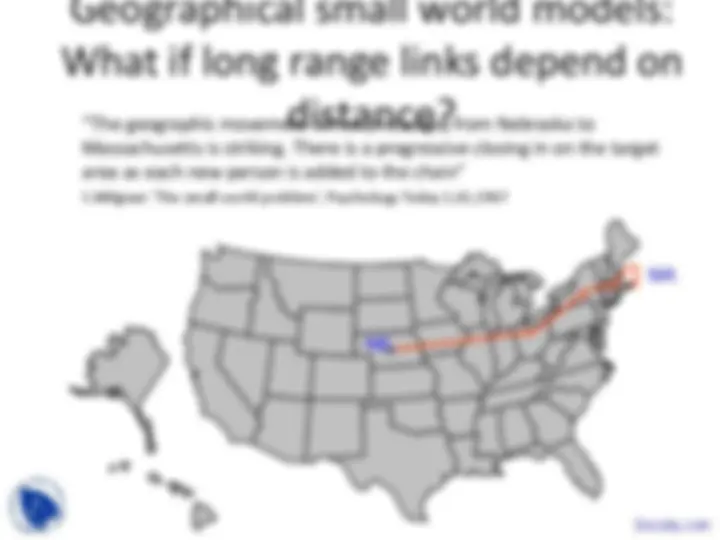
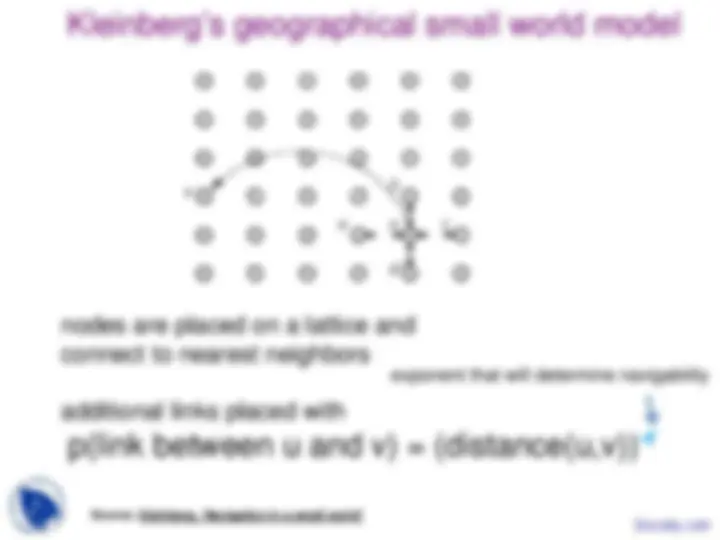
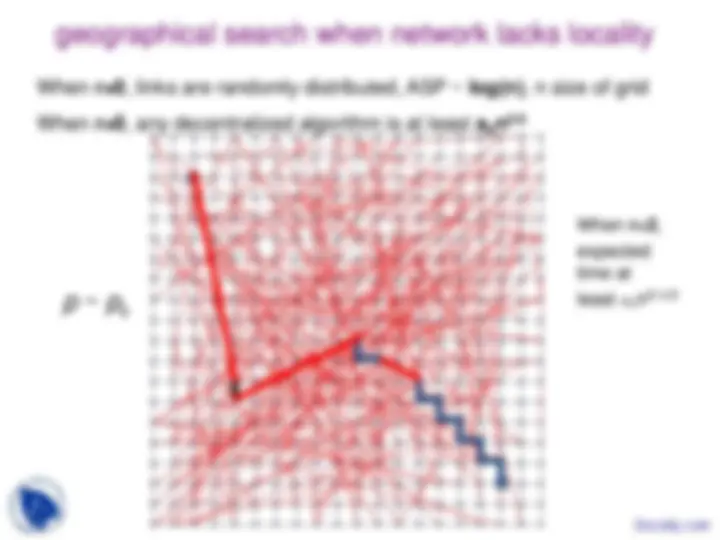
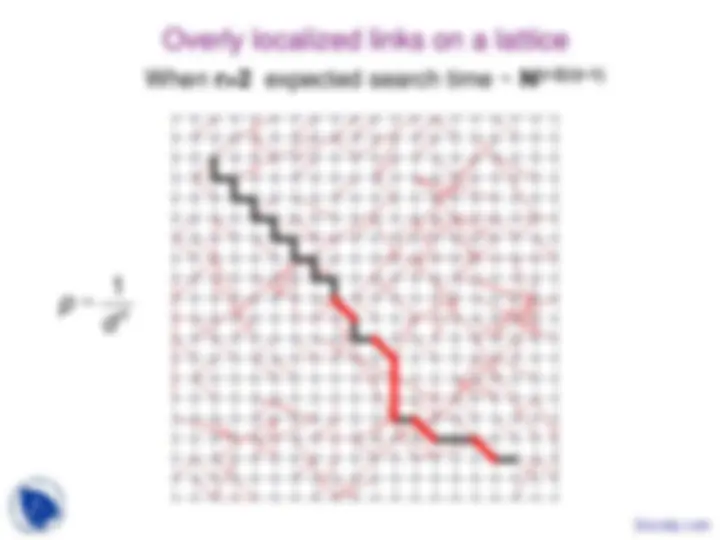
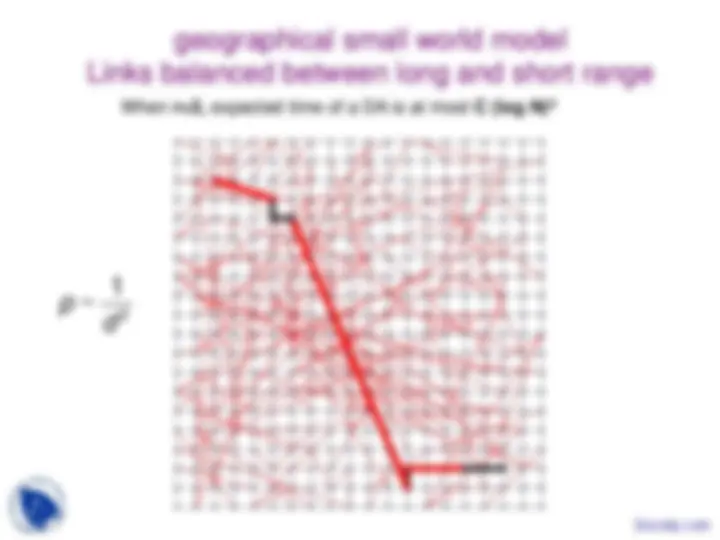
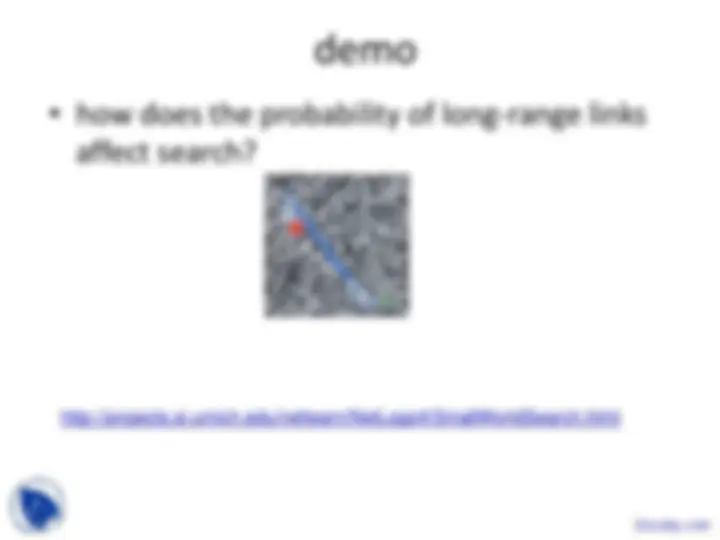
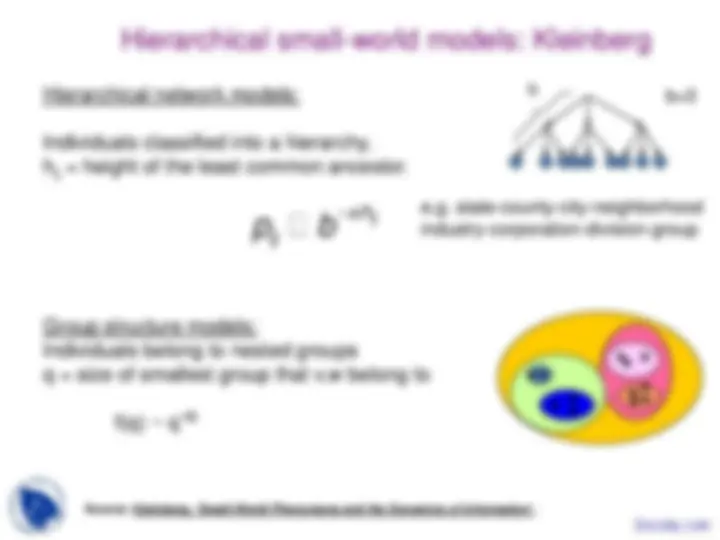
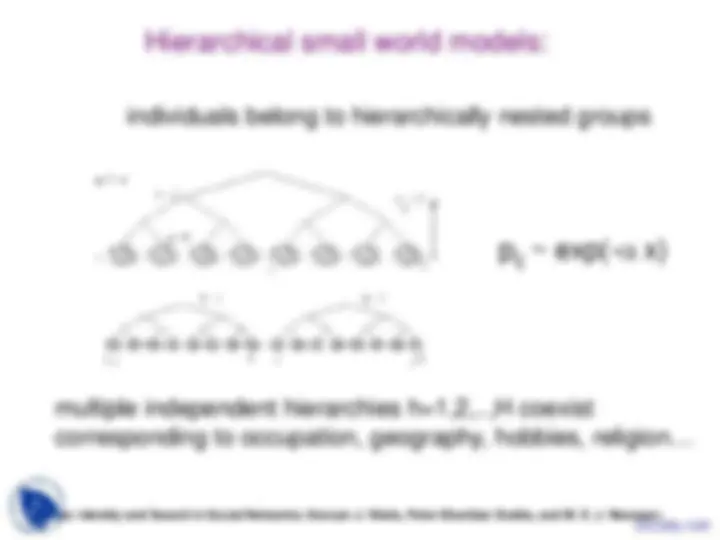
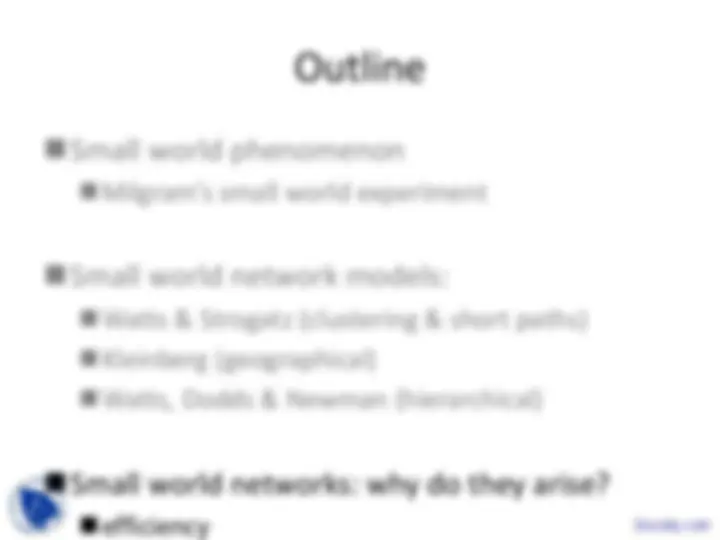
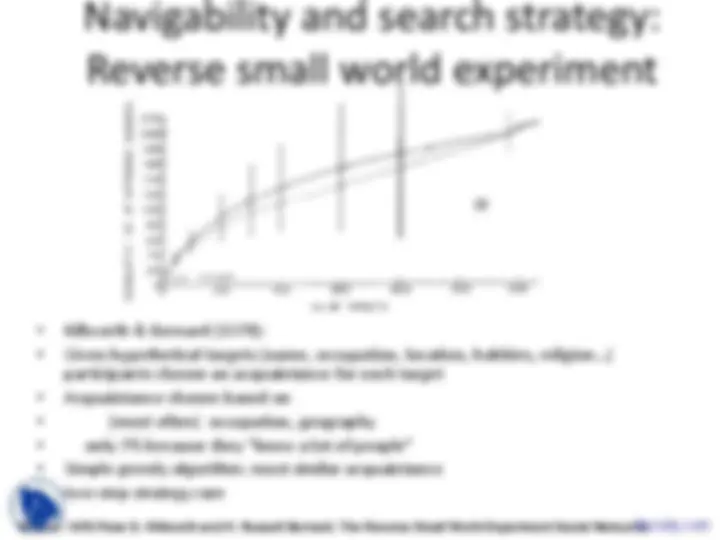
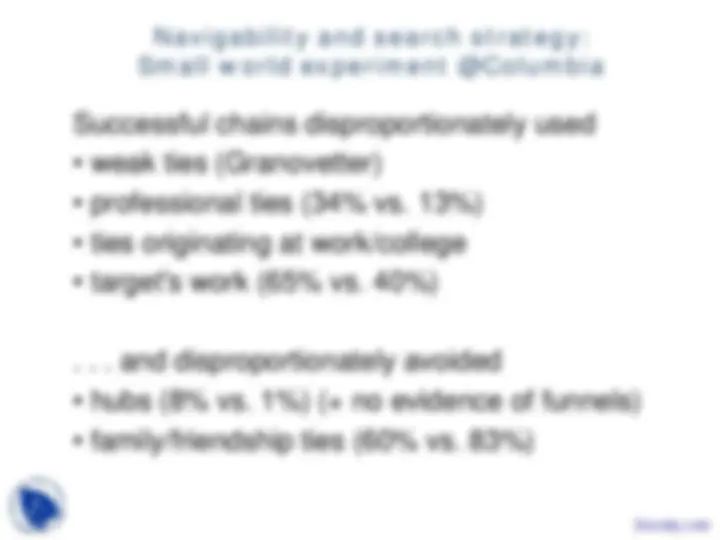
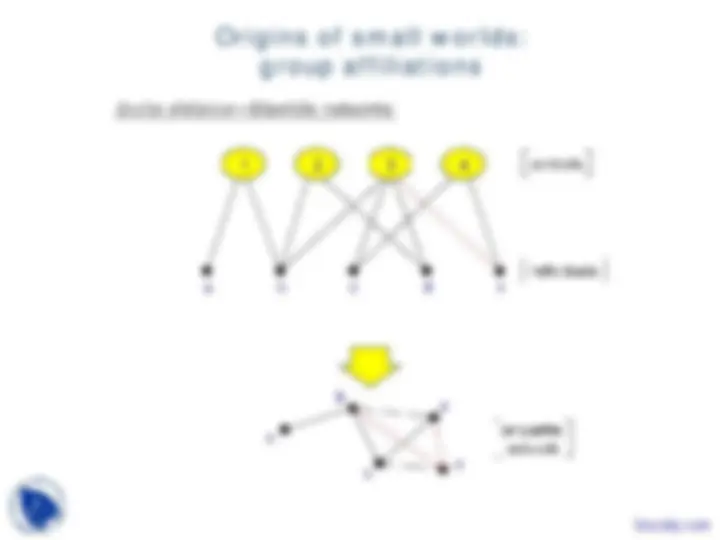

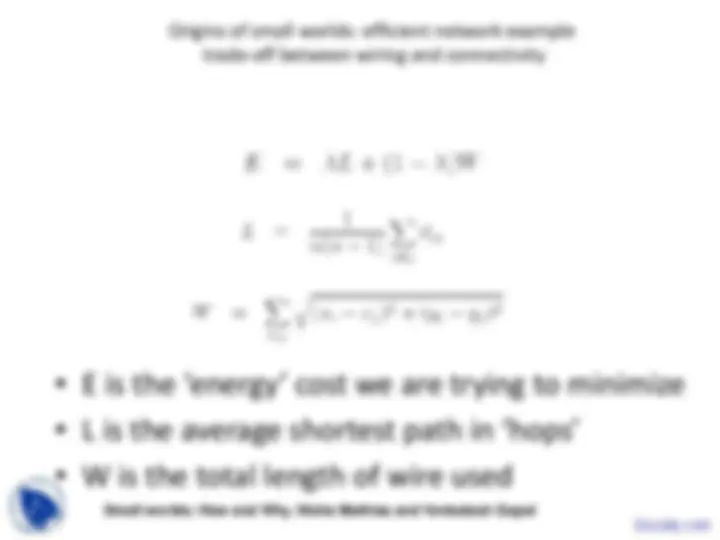
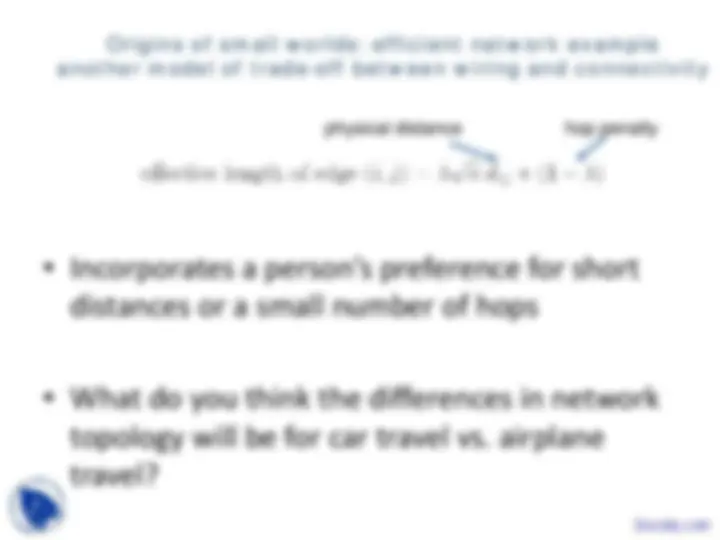
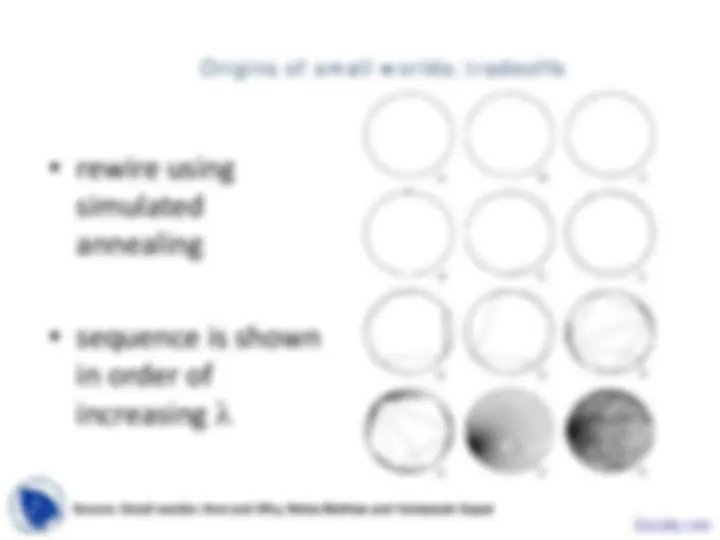
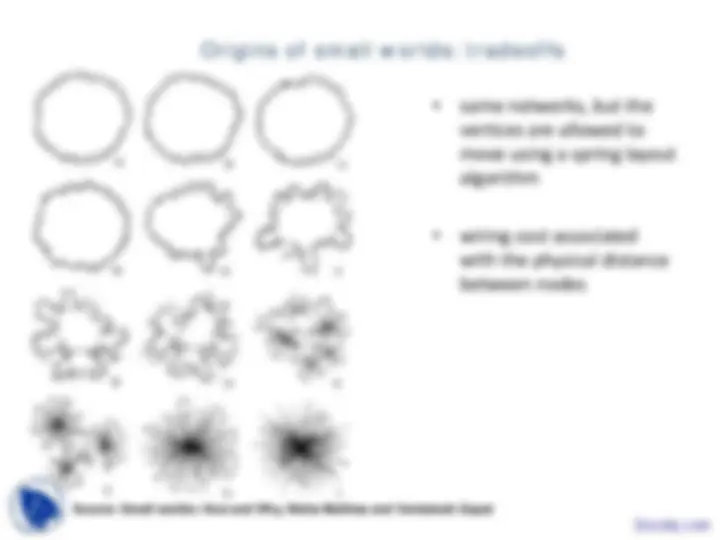
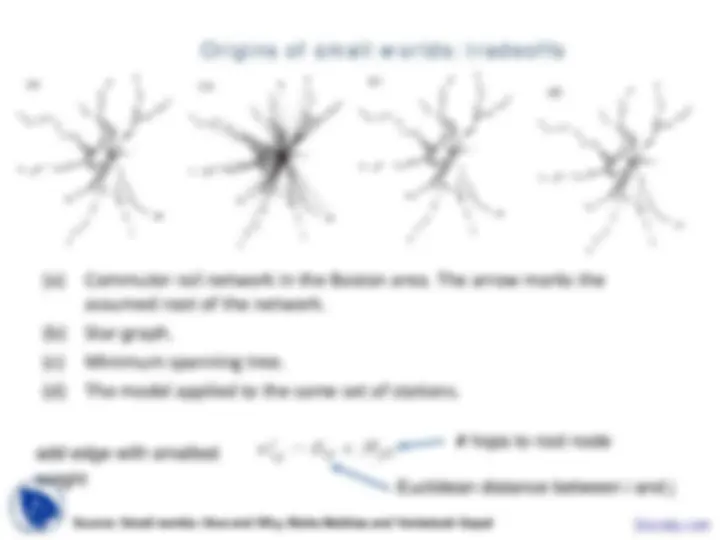
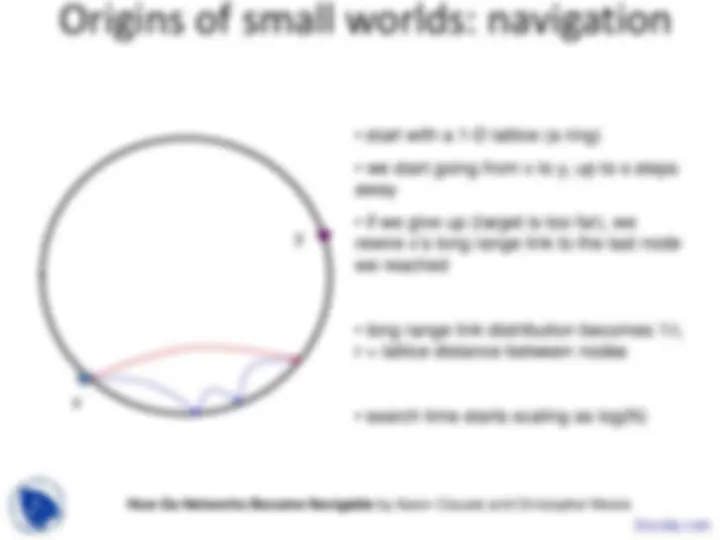
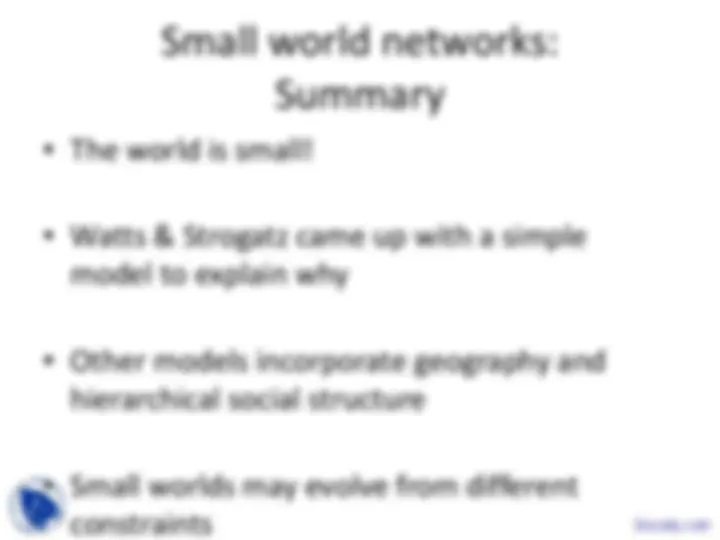


Study with the several resources on Docsity

Earn points by helping other students or get them with a premium plan


Prepare for your exams
Study with the several resources on Docsity

Earn points to download
Earn points by helping other students or get them with a premium plan
Community
Ask the community for help and clear up your study doubts
Discover the best universities in your country according to Docsity users
Free resources
Download our free guides on studying techniques, anxiety management strategies, and thesis advice from Docsity tutors
During the course of the Complex Networks, we study the different concept regarding the complex computer networking. The main points upon which in these lecture slides focused are:Small World Networks Two, Watts, Geographical, Newman, Dodds, Efficiency, Navigation, Milgram’S Experiment, Target Individual, Stockbroker in Boston
Typology: Slides
1 / 45

This page cannot be seen from the preview
Don't miss anything!






































Lecture 18:
Small World Networks
Docsity.com
Docsity.com
NE
MA
Small world phenomenon: Milgram’s experiment
“Six degrees of separation”
Outcome: 20% of initiated chains reached target average chain length = 6.
Docsity.com
email experiment Dodds, Muhamad, Watts, Science 301, (2003)
•18 targets •13 different countries
•60,000+ participants •24,163 message chains •384 reached their targets •average path length 4.
Small world phenomenon: Milgram’s experiment repeated
Source: NASA, U.S. Government; http://visibleearth.nasa.gov/view_rec.php?id=2429 Docsity.com
Small world experiment: accuracy of distances
Is 6 an accurate number?
What bias is introduced by uncompleted chains?
are longer or shorter chains more likely to be completed?
if each person in the chain has 0.5 probability of passing the letter on, what is the likelihood of a chain being completed of length 2? of length 5?
Docsity.com
average 95 % confidence interval
Small world experiment accuracy: attrition rate is approx. constant
probability of passing on message^ position in chain
Source: An Experimental Study of Search in Global Social Networks: Peter Sheridan Dodds, Roby Muhamad, andDuncan J. Watts (8 August 2003); Science 301 (5634), 827. Docsity.com
Small world experiment: accuracy of distances
Docsity.com
Small world phenomenon: business applications?
“Social Networking” as a Business:
Small world phenomenon
Milgram’s small world experiment
Small world network models:
Watts & Strogatz (clustering & short paths) Kleinberg (geographical) Watts, Dodds & Newman (hierarchical)
Small world networks: why do they arise?
efficiency Docsity.com
Reconciling two observations:
Small world phenomenon: Watts/Strogatz model
Source: Watts, D.J., Strogatz, S.H.(1998) Collective dynamics of 'small-world' networks. Nature 393:440-442. Docsity.com
Watts-Strogatz model: Generating small world graphs
Docsity.com
Docsity.com
Watts/Strogatz model: Clustering coefficient can be computed for SW model with rewiring
0.2 0.4 0.6 0.8 1
1
C(p)/C(0)
Source: Watts, D.J., Strogatz, S.H.(1998) Collective dynamics of 'small-world' networks. Nature 393:440-442.^ p Docsity.com
' ( )^3 (^1 ) − + + = − k kp p C p k
0.2 0 0.1 0.2 0.3 0.4 0.5 0.6 0.7 0.8 0.9 1
1
p
C’(p)
Source: Watts, D.J., Strogatz, S.H.(1998) Collective dynamics of 'small-world' networks. Nature 393:440-442. Docsity.com